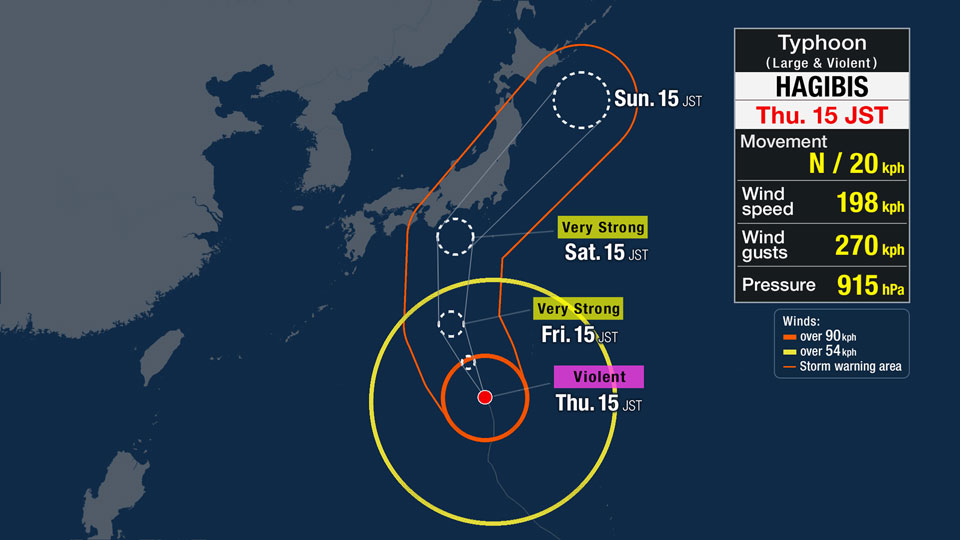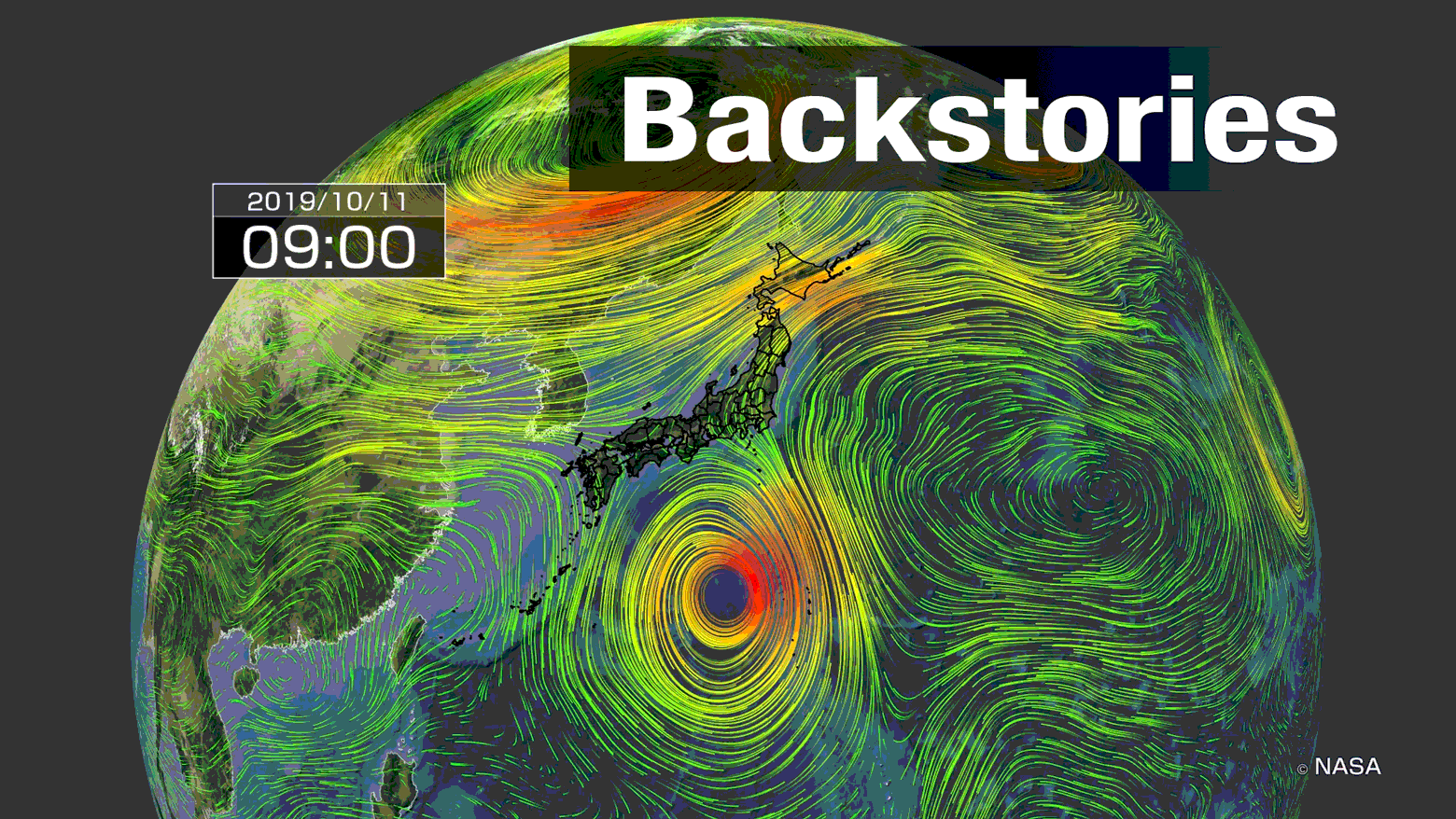JMA predicts Hagibis could weaken slightly as it churns over cooler waters and that it will be above or near the Greater Tokyo area on Saturday evening as a very strong typhoon -- the second highest category. The area will start to see waves and rain intensifying on Friday.

Japan is a typhoon-ready nation
Statistically, Japan is the third-most typhoon-prone country in Asia, with 11 typhoons approaching and two directly impacting the land every year. Japan may be prepared for large storms, but Hagibis still poses a threat.
So, why is Typhoon Hagibis so special? Here are four reasons why it could have a serious impact:
1. Size
Hagibis has a large expanse of clouds. The diameter of the windiest area, with speeds of over 54kph, is 1,400km, which is almost half the length of the Japanese archipelago. Because of its sheer size, stormy conditions will begin earlier, last longer and affect wider areas.

2. Strength
Hagibis has a central pressure of 915hPa as of Thursday, making it one the most intense tropical systems of 2019.
When it developed explosively near the Northern Mariana Islands, the central pressure plummeted from 992hPa to 915hPa within 24 hours. According to Digital Typhoon, this is the ninth-most-rapid intensification in recorded history.
JMA forecasts the pressure could be 950hPa when it nears Japan on Saturday. If Hagibis makes landfall in the Greater Tokyo area with that strength, it would be the most powerful on record to hit the region.
3. Timing
What makes Hagibis even more daunting is the timing of its likely landfall. This coming weekend is close to a full moon, meaning sea levels will be higher than normal. The combination of the high tide, giant waves and storm surges could bring a significant risk of coastal flooding.
4. Location
Hagibis could be a second heavy blow for the Greater Tokyo area within a month. In early September, Typhoon Faxai hit the region as the strongest storm to do so. It brought record-shattering 207kph gusts in Chiba Prefecture. At least three people were killed, hundreds of thousands of households remained without power for over a week and numerous homes lost their roofs. There are many houses still covered in plastic sheets and displaced people stuck in shelters.
Typhoon Hagibis could go down as one of Japan's worst-ever storms. Anyone in affected areas should stay on top of the latest information and prepare for the worst.

